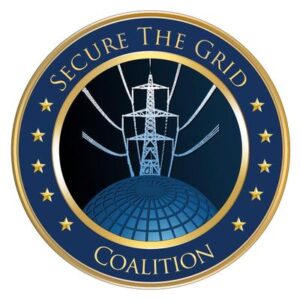STG Coalition Submits New EMP Commission Reports to FERC

Click here to read comments of Foundation for Resilient Societies
Click here to read comments of Michael Mabee
STG Coalition Acts on New EMP Commission Reports
 Members of the Secure The Grid Coalition (“STG Coalition”) wasted no time getting the new EMP Commission reports into the hands of the Federal Energy Regulatory Commission (“FERC”). As it turns out, the reports were released on May 8, 2018 and the next day, the FERC Docket on Grid Resilience closed for comments . (FERC Docket No. RM18-1-000 and AD18-7-000 – click here to learn more.) There have been over 2000 comments submitted in this docket.
Members of the Secure The Grid Coalition (“STG Coalition”) wasted no time getting the new EMP Commission reports into the hands of the Federal Energy Regulatory Commission (“FERC”). As it turns out, the reports were released on May 8, 2018 and the next day, the FERC Docket on Grid Resilience closed for comments . (FERC Docket No. RM18-1-000 and AD18-7-000 – click here to learn more.) There have been over 2000 comments submitted in this docket.
So, among the 2000 comments, the new EMP Commission reports were attached as appendices to my comments, and Foundation for Resilient Societies linked to the reports in their comments.
STG Coalition Rebuts “fake science”
On important thing about the EMP Commission reports – and why it was important that these be submitted to FERC – is to rebut the fake science by the electric utility industry. The EMP Commission explains this situation best:
“This EMP Commission Report, utilizing unclassified data from Soviet-era nuclear tests, establishes that recent estimates by the Electric Power Research Institute (EPRI) and others that the low-frequency component of nuclear high-altitude EMP (E3 HEMP) are too low by at least a factor of 3. Moreover, this assessment disproves another claim–often made by the U.S. Federal Energy Regulatory Commission (FERC), the North American Electric Reliability Corporation (NERC), EPRI and others—that the FERC-NERC Standard for solar storm protection against geo-magnetic disturbances (8 volts/kilometer, V/km) will also protect against nuclear E3 HEMP. A realistic unclassified peak level for E3 HEMP would be 85 V/km for CONUS as described in this report. New studies by EPRI and others are unnecessary since the Department of Defense has invested decades producing accurate assessments of the EMP threat environment and of technologies and techniques for cost-effective protection against EMP. The best solution is for DoD to share this information with industry to support near-term protection of electric grids and other national critical infrastructures that are vital both or DoD to perform its missions and for the survival of the American people.”
See Preface, “Recommended E3 HEMP Heave Electric Field Waveform for the Critical Infrastructures.”
It is difficult to overstate the importance of the security and reliability of the U.S. electric grid. Our ability to maintain our present human population depends on the electric grid. Significantly, the EMP Commission notes:
“A long-term outage owing to EMP could disable most critical supply chains, leaving the U.S. population living in conditions similar to centuries past, prior to the advent of electric power. In the 1800s, the U.S. population was less than 60 million, and those people had many skills and assets necessary for survival without today’s infrastructure. An extended blackout today could result in the death of a large fraction of the American people through the effects of societal collapse, disease, and starvation. While national planning and preparation for such events could help mitigate the damage, few such actions are currently underway or even being contemplated.”
See page 4, “Assessing the Threat from Electromagnetic Pulse (EMP). Executive Report.“
